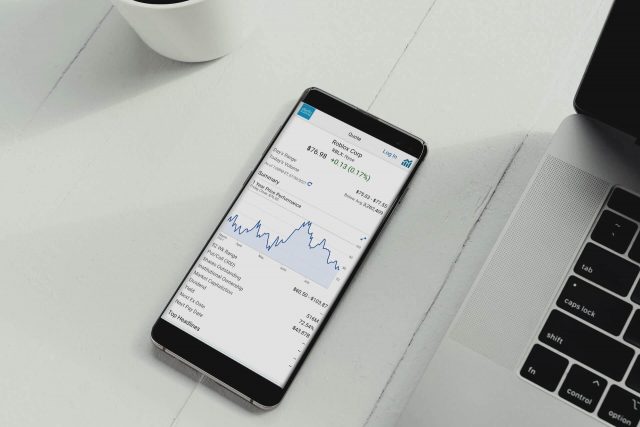
Stock investment can be broadly classified into two investment methods, “value investment” and “growth investment”, depending on what part of the stock you pay attention to. If you don’t understand the differences between them and how to manage them according to your own purpose, you may not only make a profit but also risk a large loss.
In order to avoid such dangers, it is important to keep track of the characteristics of value investment and growth investment, notable indicators, and specific stocks. However, for those who start investing in stocks, it is not easy to judge the difference between each investment method and the brand.
Therefore, in this article, we will focus on value investment, which is one of the methods of stock investment, and explain the outline, the difference from growth investment that is often compared, and the advantages and disadvantages. We will also introduce notable indicators and representative undervalued stocks in value investment.
table of contents- Value investing is a method of investing in undervalued stocks
- Superiority of value investment, difference from growth investment
- Benefits of value investing
- Disadvantages of value investing
- How to identify bargain stocks, 3 indicators to watch for value investment
- Examples of typical undervalued stocks that are ideal for value investment
- Aiming for income gain and price appreciation at the same time by investing in value stocks
1. Value investment is a method of investing in undervalued stocks

Value investing refers to investing in undervalued stocks that are priced below their intrinsic value. There are various reasons why stock prices are undervalued, such as “poor growth expectations,” “low interest,” and “high stock supply.” Although the standards differ depending on the industry, in general, if the PER (Price Earnings Ratio) or PBR (Price Book Value Ratio) is low, it is considered a “bargain stock” and is a target for value investment.
Since investment is based on “buy low and sell high”, many investors are investing in stocks based on value investing. For example, Warren Buffett, who is called the “god of investment”, also incorporates value investing as one of his strategies.
By investing in stocks based on value investment, aim for continuous income gains and sales profits while reducing risk.
2. Superiority of value investment, difference from growth investment

Growth investing is often compared with value investing. Both are extreme investment methods, and there are differences in the companies that are invested in and how they generate profits.
So next, let’s explain the difference between value investment and growth investment and how to use each properly.
2-1. Companies targeted for investment
The difference between value investment and growth investment is the “investment target company”.
As mentioned earlier, value investing is an investment method that looks for the timing when stock prices are cheap.
Companies and industries targeted for value investment include, for example, the finance and manufacturing industries. Examples of specific companies include Mitsubishi UFJ Financial Group and Takeda Pharmaceutical. While these companies do not grow as fast as growth stocks, they have stable earnings, so they attract attention as value stocks during times of discount.
On the other hand, growth investment is a method of investing in companies that are growing their sales and profits faster than the market average, with the expectation of their growth potential. In recent years, Tesla and GAFAM
IT and technology companies such as , are highly popular with investors as growth stocks.
*Acronym for Google (Alphabet), Apple, Facebook (Meta Platforms), Amazon, and Microsoft
2-2. Differences in profit making
There is also a difference in the way profits are generated between value and growth investments. In value investment, we mainly aim for profits in both “capital gains” and “income gains”.
Capital gains, also known as trading margins, are the profits you get from selling your stocks. For example, if the stock purchased at 1 million yen can be sold at the timing when the price rises to 1.2 million yen, the difference of 200,000 yen is the capital gain.
On the other hand, income gain is the profit passively obtained through holding stocks etc. as assets. Assuming that you own 1 million yen worth of stock, if the annual dividend yield is 3%, you can earn an income gain of 30,000 yen per year.
On the other hand, in growth investment, the basic operation method is to obtain profits through capital gains. Some stocks with high growth potential can see their stock prices increase by more than 10 times in a few years, and you can aim for a large return. However, stocks targeted for growth investment tend to have low dividend yields, so it can be said that they are not very suitable for investment aimed at income gain.
2-3. Proper use of both
Based on the differences in investment target companies and how they generate profits, let’s explain how to distinguish between value investment and growth investment.
As mentioned earlier, value investing is investing in stocks that are undervalued compared to the original stock price, and if you choose stocks with high dividend yields, you can get stable income gains. In addition, since the value is lower than the original value, there is a good chance that you can obtain a trading margin through capital gains if you choose an appropriate stock. Value investing is suitable for investors who want to operate reliably while reducing risk.
On the other hand, growth investment is suitable for investors who want to take a certain amount of downside risk and aim for a large increase in capital gains. It will be necessary to analyze companies based on stock price indices to identify growth stocks, and to have the insight to find growth companies while considering market trends.

3. Benefits of value investing
Value investing has two advantages: it can be operated with relatively low risk and it tends to have a high dividend yield. I will explain each in detail.
- 3-1. Can be operated with relatively low risk
- Volatility tends to be low
The stock price is already undervalued, so it is difficult to fall
Bargain stocks, which are the target of value investment, tend to have less volatility, which is the degree of price change, compared to growth stocks. Low volatility means that the stock price is stable and has little fluctuation. Low volatility and undervalued stocks have led to low stock price declines during recessions and economic downturns. Even if the current stock price is low, you can safely hold the stock until it moves to a fair price.
As mentioned above, the merit of value investment is that it can be operated with relatively low risk.
3-2. Dividend yield tends to be high
Another advantage of value investing is that it tends to yield higher dividends. For example, the three shipping companies known as value stocks, Mitsui O.S.K.
Value stocks with high dividend yields are attractive to investors looking to profit from income gains.

4. Disadvantages of value investing
I have explained the advantages of value investing so far, but there are also some disadvantages. Among them, let’s take a closer look at “It is difficult to expect a large return” and “There are many cases where the stock is undervalued due to negative reasons.”
4-1.It is hard to expect big returns
Most of the stocks targeted for value investment are either not expected to grow or the market has matured. Therefore, sudden changes such as stock prices rising several times in a short period of time do not occur.
Although it has the advantage of obtaining stable income gains, it is better to think that returns due to capital gains cannot be obtained as much as growth investment. If you are aiming for a large return in a short period of time, value investing is not suitable.
- 4-2. There are many cases where prices are lower due to negative reasons
- It is important to ascertain the background of the discount
Look for undervalued stocks that are likely to undergo price revisions in the future
Stocks are undervalued most of the time for a reason. If the stock is undervalued due to negative reasons such as “business performance is deteriorating” or “market size is shrinking,” it is likely that there is simply no one buying the stock and there is a large supply. If the price is discounted for negative reasons, it may not return to the fair price.
Therefore, it is not recommended to take it easy just because it is cheap. It is important to look for undervalued stocks that can be expected to undergo a price review in the future.

5. How to identify undervalued stocks, 3 indicators to pay attention to in value investing
- The key to value investing is how to find undervalued stocks. In value investing, look for the following three metrics:
- PBR (price book value ratio)
- PER (price earnings ratio)
Capital adequacy ratio
We will explain each indicator in detail.
5-1.PBR (price book value ratio)
PBR (price book value ratio) is an index calculated by “price ÷ net assets per share (BPS)”, and means how many times the net assets are priced per share. For example, if the stock price is 5,000 yen and the net assets per share is 10,000 yen, the PBR is 0.5.
In general, if the PBR is 1 or less, it is considered an undervalued stock, so it is a good idea to focus on PBR in value investment. However, rather than simply making judgments such as “because it is less than 1x, it is undervalued” or “over 1x, it is overpriced”, add “Is it profitable?” and “Can we expect future growth?” as evaluation items. that is important.
5-2.PER (price earnings ratio)
PER (Price Earnings Ratio) is an index calculated by “Price ÷ Net Earnings Per Share (EPS)” and means how many times the stock price is the net profit. At ¥10,000 per share and net income per share of ¥500, the PER is 20x. Stocks with a P/E ratio of less than 15 are generally considered undervalued.
However, PER standards vary by industry. Since it is not easy to say that a stock is undervalued or overpriced based on how many times it is, it is important to make a judgment by comparing it with the PER of companies in the same industry.
5-3.Equity ratio
The capital adequacy ratio is the percentage of the total assets owned by a company that is not repaid. If the capital adequacy ratio is high, it can be judged that the debt is small and the management is stable.
The reason why capital adequacy ratio is important is to exclude companies with high bankruptcy risk. The PBR indicator that I introduced earlier may decrease when the risk of a company’s dissolution increases. PBR is also an important indicator for judging whether a stock is a bargain or not, but in addition to that, we recommend adding the item that the capital adequacy ratio is 50% or more as a criterion for judgment.

6. Examples of representative undervalued stocks suitable for value investment
So far, we’ve looked at the metrics that are important for finding value investing benefits and undervalued stocks. From here, we will actually introduce examples of representative undervalued stocks that are considered optimal for value investment as of late February 2023, both domestically and internationally.
6-1. Domestic value stocks
Let’s take a look at the domestic bargain stocks “Asahi Kasei” and “Kawasaki Kisen”.
6-1-1.Asahi Kasei
Asahi Kasei is a company that develops businesses related to chemical products, electronic components, pharmaceuticals, housing, construction, and petrochemical products.
Although the stock price fell once due to the impact of the corona disaster, it will rise until the first half of 2021, and after that, it will gradually decline while repeating the rise and fall. As of the end of May 2023, the PBR is 0.79 times, and the equity ratio as of the fiscal year ending March 2022 is 50.4%.
6-1-2.Kawasaki Steamship
Kawasaki Kisen, one of the major shipping companies, is a company that develops logistics business, including marine transportation business and land transportation business, as well as fuel business and warehousing business.
As of the end of May 2023, Kawasaki Kisen’s PER is 1.27 times and PBR is 0.53 times, both of which are considerably undervalued. The equity ratio remained in the 20% range until the fiscal year ended March 31, 2021, but as of the fiscal year ended March 31, 2022, the equity ratio has risen significantly to 56.2%.
The rapid growth in performance has been since the corona crisis, and it is necessary to pay close attention to future trends, but the high dividend yield of 6.1% is also attractive.
6-2.Overseas value stocks
I will explain “Verizon Communications”, “Exxon Mobil”, and “Procter & Gamble”, which are overseas bargain stocks.
6-2-1.Morgan Stanley
Headquartered in New York, USA, Morgan Stanley is a major securities and financial services company that provides securities and asset management services.
As of early June 2023, PER and PBR are 14.4 times and 1.47 times respectively, which can be judged to be relatively cheap.
Although the stock price plummeted around March 2020, it has since recovered and continues to rise, and as of 2023, it is in the $80-90 range.
6-2-2.Exxon Mobil
Exxon Mobil is an oil company headquartered in Texas, USA. We are engaged in fuel business, petroleum business, chemical product business, etc.
As of late May 2023, PER and PBR are 7.92x and 2.11x, respectively.
Exxon Mobil shares have soared as energy prices soared after Russia’s invasion of Ukraine. While the P/E ratio is slightly higher than the standard for bargain stocks, the bargain may return as energy prices stabilize.
6-2-3. Procter & Gamble (P&G)
Procter & Gamble is the world’s largest consumer packaged goods company headquartered in Ohio, USA. We are working on products that are familiar in Japan, such as Lenoir and Febreze.
The PER is 25 times and the PBR is at a high level of 7.41 times, and although it is difficult to say that it is cheap compared to general value stocks, it is popular as a value stock.
It is an excellent company that has continued to grow for many years, and even if the economy deteriorates, the demand for general consumer goods will not run out. I can say

7. Simultaneously aim for income gains and capital gains by investing in value stocks
When starting stock investment, it is important to understand the difference between “value investment” and “growth investment” not only to earn profits but also to reduce the risk of losses. Of these two, value investing is attractive because it tends to have relatively low-risk operations and high dividend yields.
In order to judge whether a stock is a value stock, it is good to use “PBR (price book value ratio)”, “PER (price earnings ratio)” and “equity ratio” as indicators. Please refer to the specific individual stocks introduced in this article and use them to discover stocks that are targets for value investment. 
nhttps://imgs.coinpost-ext.com/uploads/2023/06/value-investment-640×336.jpg –>
The post What is “value investment” that invests in undervalued stocks | Explaining the overview, advantages and disadvantages appeared first on Our Bitcoin News.

 2 years ago
171
2 years ago
171














 English (US) ·
English (US) ·